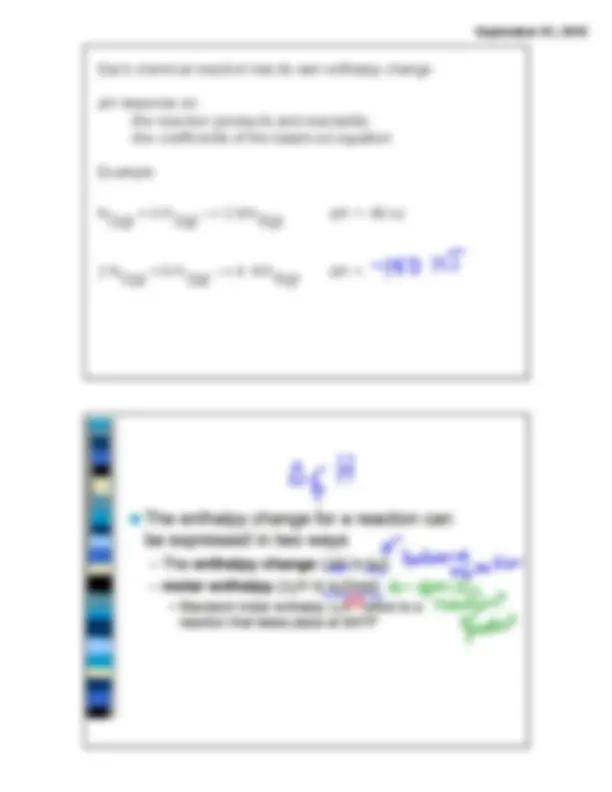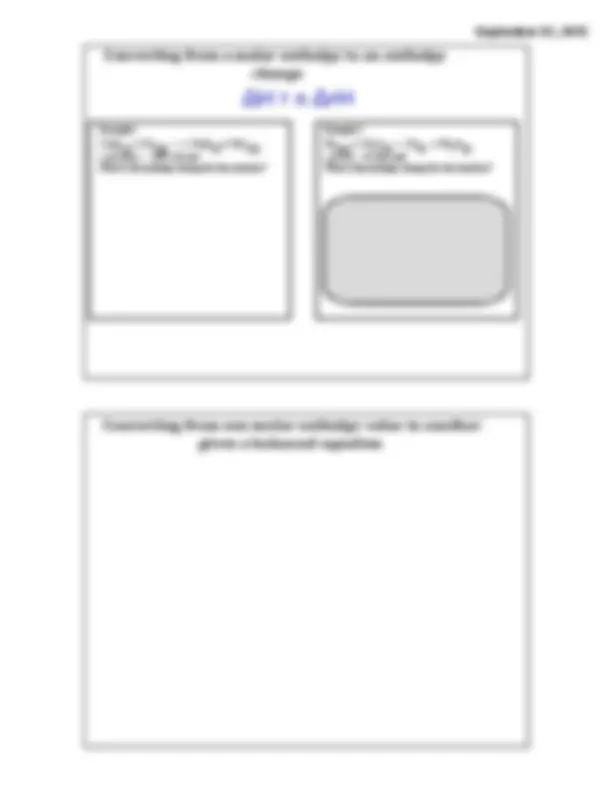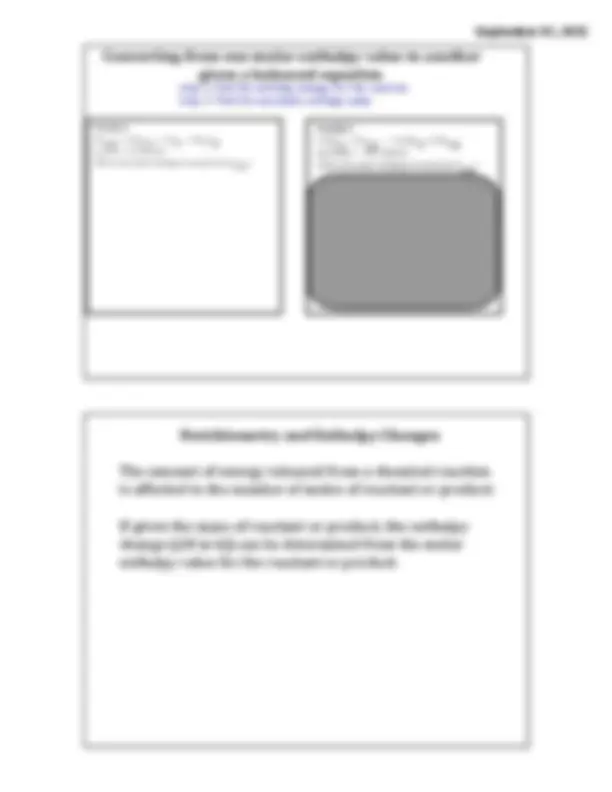








Study with the several resources on Docsity

Earn points by helping other students or get them with a premium plan


Prepare for your exams
Study with the several resources on Docsity

Earn points to download
Earn points by helping other students or get them with a premium plan
Community
Ask the community for help and clear up your study doubts
Discover the best universities in your country according to Docsity users
Free resources
Download our free guides on studying techniques, anxiety management strategies, and thesis advice from Docsity tutors
A lesson on enthalpy changes in chemical reactions, explaining the concepts of molar enthalpy and enthalpy change, and providing examples and formulas for calculating enthalpy changes. It covers endothermic and exothermic reactions, and includes examples of the combustion of ethane and the formation of sulfur trioxide.
What you will learn
Typology: Study Guides, Projects, Research
1 / 11

This page cannot be seen from the preview
Don't miss anything!







Thermal energy is released or absorbed by chemical
reactions
Endothermic Reactions
· more energy is required to break bonds than is released
by bond formation
Exothermic Reactions
· more energy is released in bond formation that is required
to break bonds
Each chemical reaction has its own enthalpy change
∆H depends on:
-the reaction (products and reactants)
-the coefficients of the balanced equation
Example
N
2(g)
2(g)
--> 2 NH
3(g)
∆H = -90 kJ
2 N
2(g)
2(g)
--> 4 NH
3(g)
∆H =
Converting from an enthalpy change to a molar
enthalpy value
2 NaOH (s)
(l)
-‐-‐> 2NaAlO 2(aq)
2(g)
Converting from a molar enthalpy to an enthalpy
change
Example
2 ZnS (s)
-‐-‐-‐-‐> 2 ZnO (s)
∆ r
H (ZnS) = -‐ 439.1 kJ/mol
What is the enthalpy change for the reaction?
Example 2
SO 2(g)
S (s)
-‐-‐> 3 S (l)
O (g)
∆ r
H (S) = -‐31.0 kJ/mol
What is the enthalpy change for this reaction?
Example 1
11(s)
2(g)
2(g)
(l)
r
) = -‐5640.3 kJ/mol
What is the enthalpy change for the reaction of 20.0 g
of sucrose (C 12
Example 2
2(g)
(s)
(l)
(g) ∆rH(S) = -‐ 31.0 kJ/mol
What is the enthalpy change for the reaction of 100 g of S(s)?
step 1: Find the molar enthalpy for the substance you are given the mass of
step 2: Find the ∆H = n ∆rH, where n=m/M
Example 1
2 NaOH (s)
(l)
-‐-‐> 2NaAlO 2(aq)
2(g) ∆H = -‐850 kJ
How much energy is released when 250 grams of
aluminum reacts?
2 KCl (s)
4(l)
-‐-‐-‐-‐> 2 HCl (g)
4(s)
Step 1: ∆rH = ∆H/n
∆H = +41.0 kJ/ 1 mol K 2
SO 4
∆H = +41.0 kJ/mol
Step 2: ∆H = n ∆r H
= 40.0 g/174.27 g/mol x +41.0 kJ/mol
∆H = +9.41 kJ
-3.94 x 10 3 kJ
Determining moles of reactant or product given an enthalpy
change
Example 1
11(s)
2(g)
2(g)
(l)
r
) = -‐5640.3 kJ/mol
If 10 000 kJ of energy is released, what mass of sucrose reacted?
Step 1: Find ∆rH for KCl
∆rH = ∆H/n = +41.0 kJ/ 2 mol KCl
∆rH = +20.5 kJ/mol
n = ∆H / ∆rH
n = + 300 kJ / + 20.5 kJ/mol
n= 14.6 mol
m = 14.6 mol x 74.55 g/mol = 1076 g
m = 1.09 kg